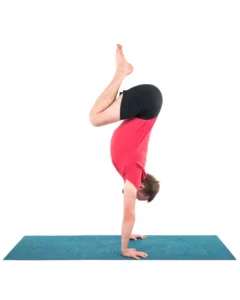Over Easy: 4 Gentle Alternatives to Inversions
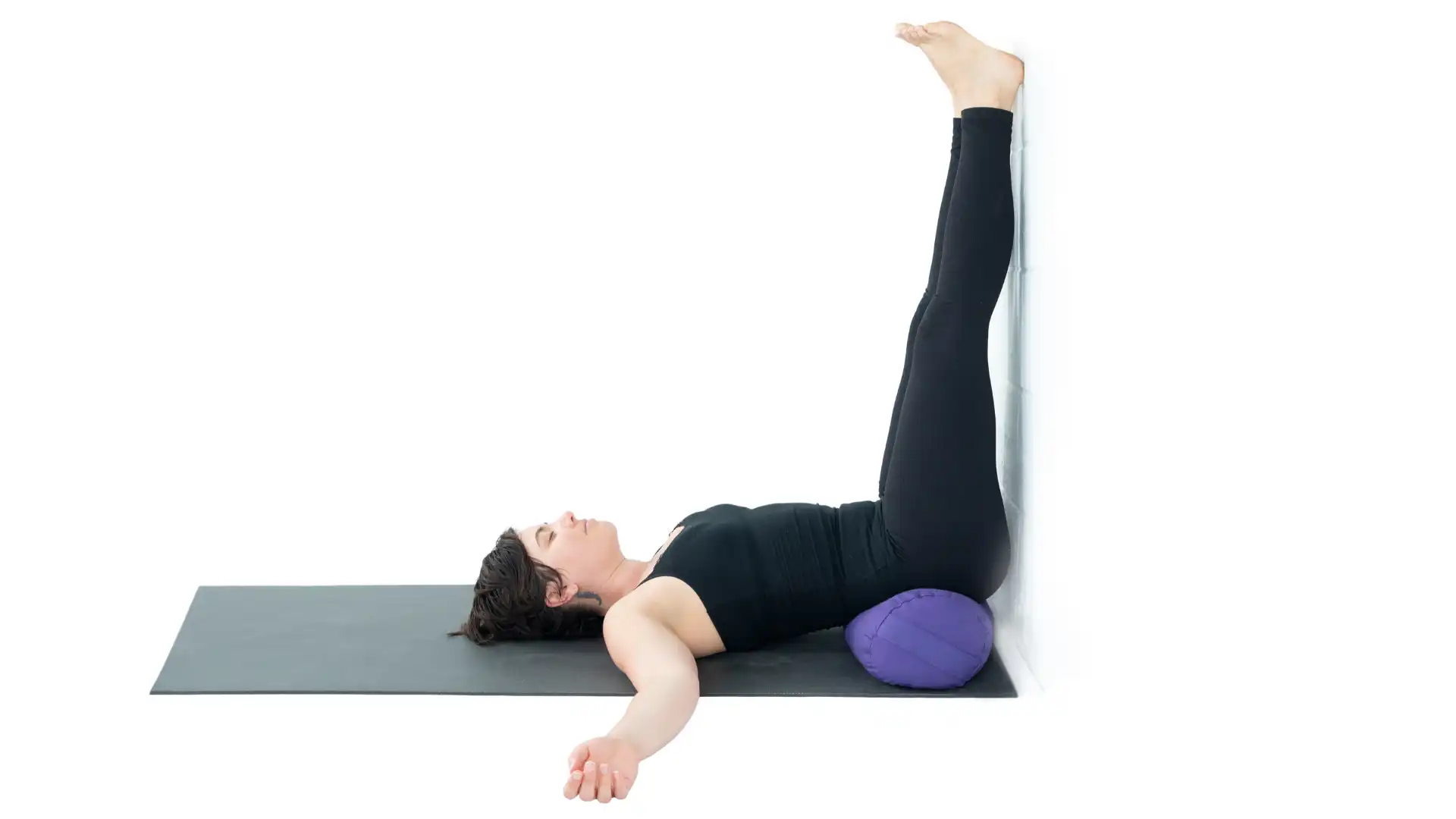
It’s said that the Headstand (Sirsasana) is the king of yoga postures, while the Shoulderstand (Sarvangasana) is the queen. Handstand (Adho Mukha Vrksasana) and Peacock (Pincha Mayurasana) certainly must also live in the royal court. These “inversions,” so named because they invert (or switch) our bodies’ relationship to space and gravity, have numerous health benefits.
On the other hand, these postures are quite challenging. They require considerable core strength, an open shoulder girdle, and physical awareness of how to use these things together to achieve them, not to mention the fear of falling that many people experience.
What if you’re a yoga beginner and haven’t yet learned how to execute these postures? What if most or all of your practice is at home, without an instructor to guide you in learning them? What if a medical condition fully prevents you from executing them or makes it potentially dangerous to do so? Should you not be able to experience the benefits that inversions can offer?
Absolutely not. With wise modifications, the benefits of yoga are open to all people. Any pose with the head, notably below the heart, is classified as an inversion. Many such postures—such as the four following ones—are far less strenuous, more accessible to practice, and sometimes safer than traditional inversions. These postures are easily incorporated into a yoga sequence at home.
Yoga Props You’ll Need for Gentle Inversion Alternatives:

- a mat
- a clear wall
- a bolster or 1-3 oversized pillows
- a yoga blanket
- 2 yoga blocks
- You can hold each pose for ten breaths or longer if you wish and have time. These postures are all supported with props.
Bolster Supported Adho Mukha Svanasana (Downward-Facing Dog Pose)
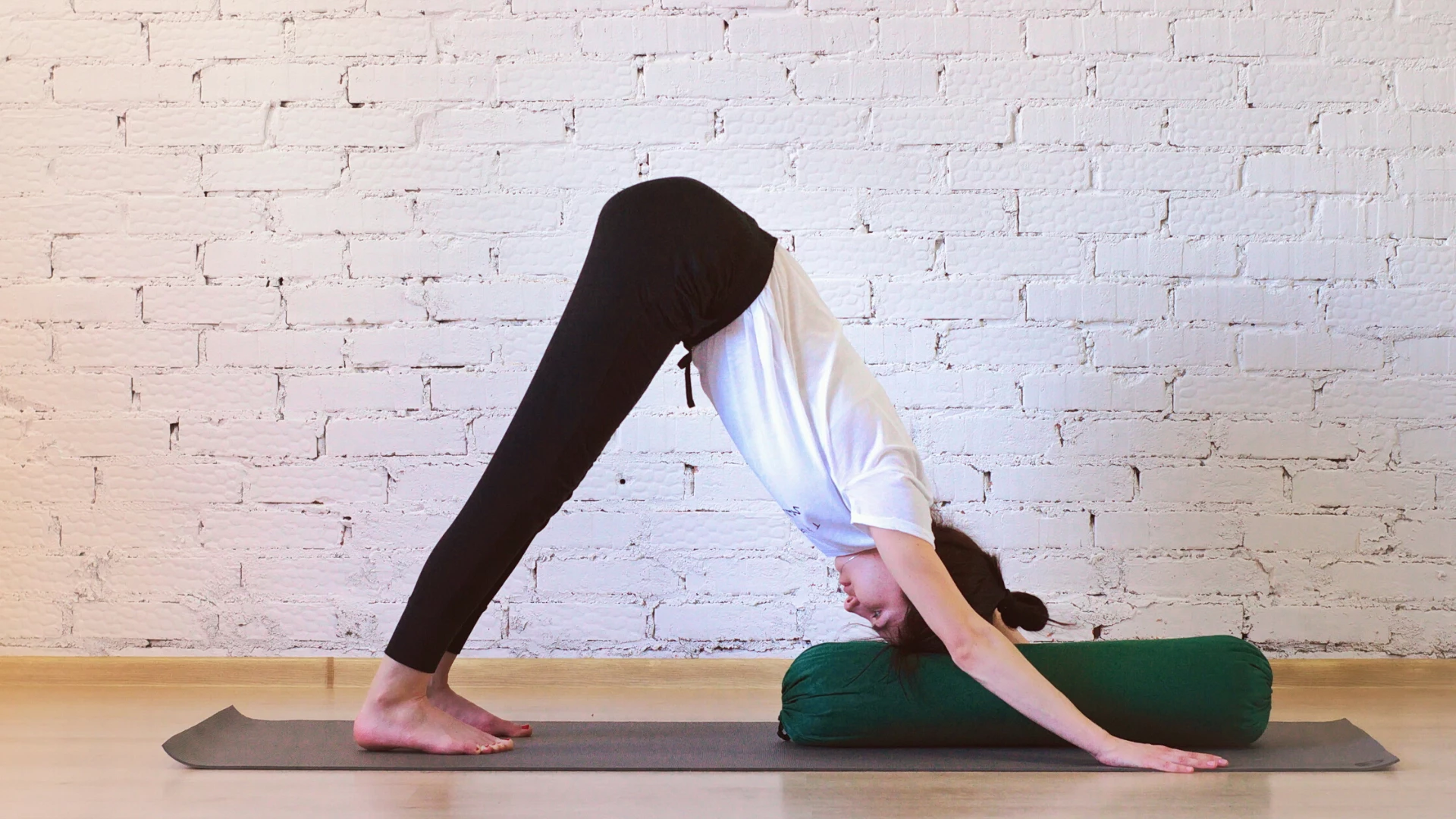
- Drag your mat to your wall. Place two blocks, the longest way, somewhere at the top half of your mat (depending upon your height).
- Fold a blanket in half (not pictured), then roll it (from the long edge) to create a long, sturdy blanket roll. Place that along the wall (along the short edge of your mat).
- Take a Tabletop Pose with your feet on the blanket roll (balls of feet on your mat, heels on top) and your hands on the blocks or the mat. They can be a bit in front of your shoulders for now, but draw them back if your stance feels too long in your final pose here. (You may try not using the blocks (as pictured above) if you think your practice of this pose is more stable and integrated without them.)
- Lift your hips and straighten your knees to take a Supported Downward-Facing Dog. Feel your forearms lift, adding buoyancy that can further raise your hips. Feel your biceps spinning forward to stabilize your upper body. Spin your inner thighs back and pull your belly in.
- With those refinements, see if you might have the stability to allow your body to lengthen and soften in the pose, like melting taffy. Feel your heels gradually sink deeper into the support of the blanket roll.
- Make any other adjustments you need to be more comfortable—it’s worth the time and effort.
- If you feel your head could use more support, place a bolster (or large rolled blanket) longways on your mat (as pictured), onto which your head can rest.
Gently Invert with Prasarita Padottanasana (Wide-Legged Forward Bend) with Blocks
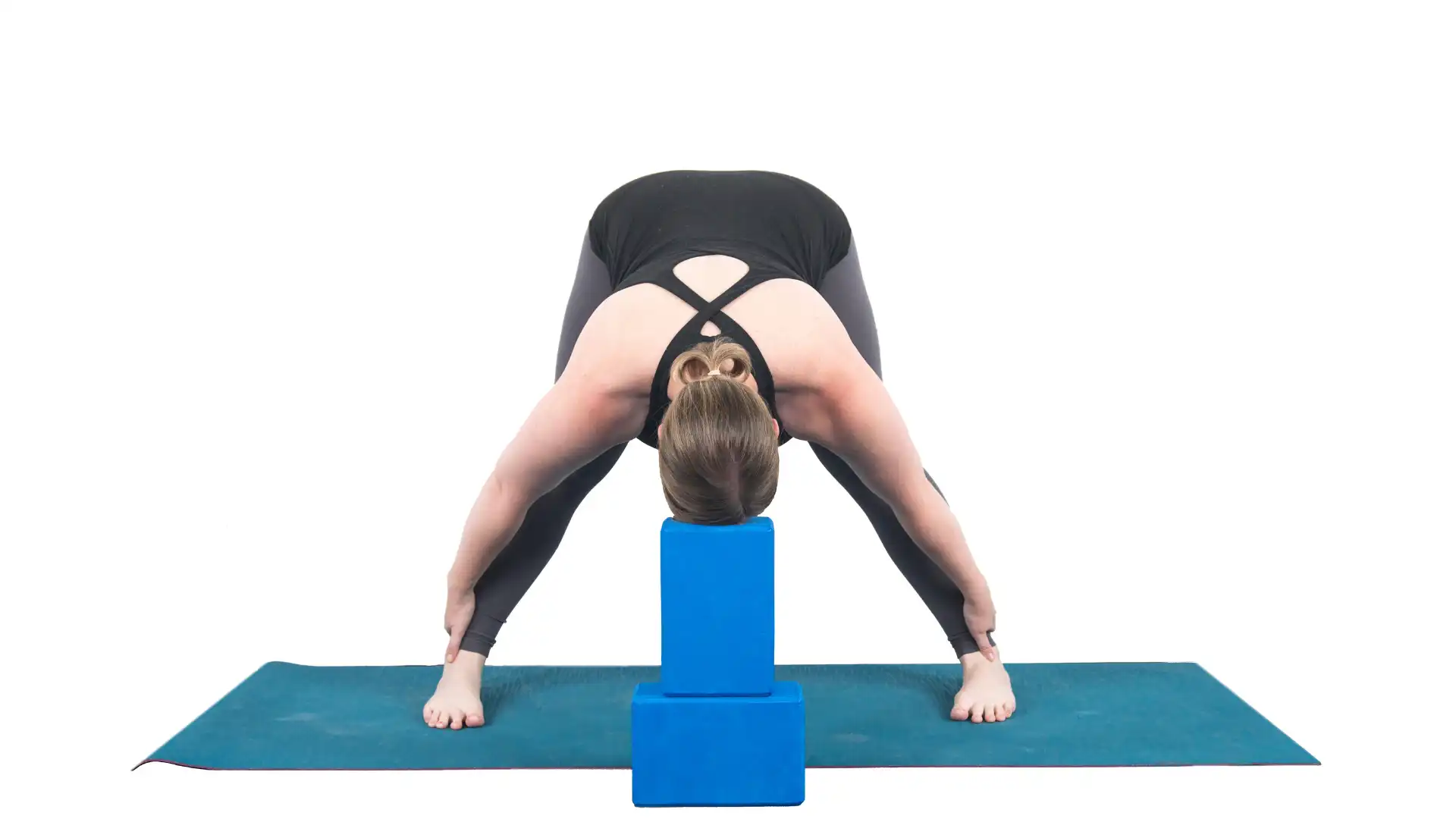
- Lay your mat fully out.
- Place your bolster, rolled blanket, or row of large pillows across your mat, about halfway or mid-mat (to support your head in this forward bend).
- Step to a wide straddle, about three to four feet (depending on the length of your legs, wider if they’re on the longer side) around your bolster. It should fall under your torso and pelvis. Keep a micro-bend in your knees.
- Place your hands on your hips (feel for your bony hip points if you’re unsure where they are).
- Hinge your torso forward, your spine straight. Your head should fall on the bolster. If it doesn’t quite make it there, add a pillow or block (or more).
- Keep the micro-bend in your knees, and have that help you keep your weight mainly on the balls of your feet.
- Press into your big toes, but lift up your insteps (the inner parts). Let that action spiral upwards through your legs so your thighs roll outwards (and away from one another). This will stabilize your lower body so that your upper body can release and relax.
- Focus on your breath, and let that bring you ease. Let this be your easy yoga.
Uttana Shishosana (Puppy Pose) Variation
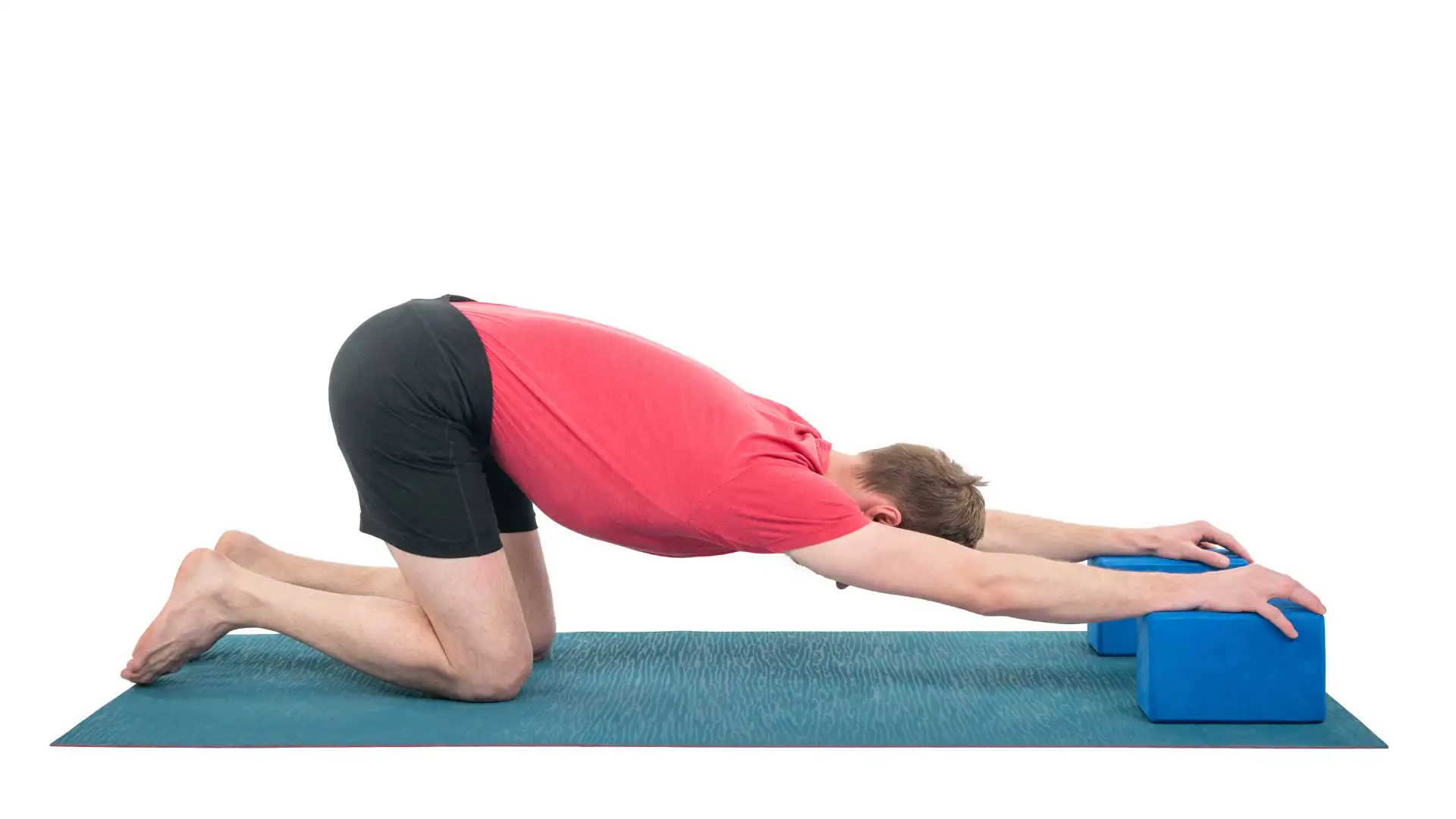
- Fold your blanket in half, then roll it up from one end to the other.
- Place your blocks in front of the blanket roll and towards the outer edges of your mat (facing the long way, as pictured).
- Come to Tabletop Pose with your hips over your knees, pressing firmly into your shins and tops of feet, and your inner thighs spiraling backward.
- Drape your torso over the blanket roll so that your chest falls on it and your head moves toward the block.
- Place one hand on each block. Spread your fingers, slightly lift your forearms, and spin your biceps gently up – all in order to stabilize the pose and avoid straining any involved upper-body parts.
- You will likely feel sensation, but this posture variation should be comfortable rather than rigorous.
- Keep your inner thighs slightly drawing back so that your lower body stays stable and its joints stay in safe alignment.
- Keep your abdominals slightly engaged, especially if you have a hypermobile back, to support your spine. But relax your chest, face, jaw, shoulders, and arms, particularly on your exhalations. With your inhalations, gather more length through your spine. With your exhalations, soften that length. Continue this easy, supportive dance of the breath.
Gentle alternative Inversion: Viparita Karani (Legs Up-the-Wall Pose)

- Go to your wall, and place your bolster parallel to the wall and about 3-5 inches away from the wall. (Alternatively, you can place your lower legs over the seat of a chair.)
- Sit along its long edge, and then spin on the hip touching the bolster to then lie on your back.
- As you spin, your feet will rise to the sky. Engage your abdominals a bit to lift your hips enough to lay your bum, hips, and lower back on the bolster (your back will also have to scoot toward the wall). Your bum should be slightly off the edge of the bolster, moving toward the wall.
- Your whole body is supported here. Your upper body on the floor, your lower body by the bolster (and maybe other props) and the wall or bed. So, allow yourself to be supported.
- Allow your entire backside to soften, especially on your exhalations, and let that softening seep into your front side.
- If it is comfortable, close your eyes and turn inward. Listen to any messages that your body might be offering.
- Let any thoughts be no more than that—just thoughts, temporary things that can pass without drama. Know that in a short time and without extraneous effort, you nurtured your body, mind, and spirit. Know that, for you today, that’s more than plenty. Allow that abundance to fill you here.
 Love a gentle yoga practice and gentle inversions? Study Restorative Yoga with YogaUOnline and Judith Hanson Lasater: Breathe, Heal, Relax and Renew – An Introduction to Teaching Restorative Yoga.
Love a gentle yoga practice and gentle inversions? Study Restorative Yoga with YogaUOnline and Judith Hanson Lasater: Breathe, Heal, Relax and Renew – An Introduction to Teaching Restorative Yoga.
Kathryn Boland is an RCYT and R-DMT (Registered Dance/Movement Therapist). She is originally from Rhode Island, attended George Washington University (Washington, DC) for an undergraduate degree in Dance (where she first encountered yoga), and Lesley University for an MA in Clinical Mental Health Counseling, Expressive Therapies: Dance/Movement Therapy. She has taught yoga to diverse populations in varied locations. As a dancer, she has always loved to keep moving and flowing, practicing more active Vinyasa-style forms. Her interests have recently evolved to include Yin and therapeutic yoga, and aligning those forms with Laban Movement Analysis to serve the needs of various groups (such as Alzheimer’s Disease patients, children diagnosed with ADHD, and PTSD-afflicted veterans – all of which are demographically expanding). She believes in finding the opportunity within every adversity, and doing all that she can to help others live with a bit more breath and flow!



